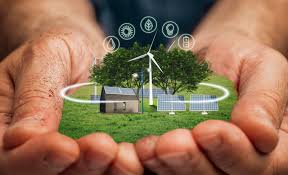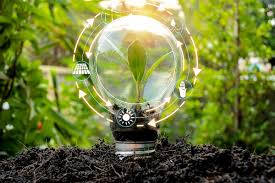Energy Technology
Energy Technology: Powering the Future
Energy technology refers to all technologies used to generate, store, distribute, and use energy efficiently and sustainably. It plays a crucial role in modern society by ensuring access to electricity, reducing dependence on fossil fuels, and mitigating environmental impact. With rising concerns about climate change and energy scarcity, innovations in energy technology are more important than ever.

Types of Energy Technology:
-
Renewable Energy Technologies
-
Solar Power: Uses photovoltaic (P V) cells to convert sunlight into electricity. Solar panels are widely used in homes, businesses, and solar farms.
-
Wind Energy: Wind turbines convert wind into electricity. Onshore and offshore wind farms are growing rapidly worldwide.
-
Hydropower: Uses the flow of water (typically in dams or rivers) to produce electricity.
-
Geothermal Energy: Extracts heat from beneath the Earth’s surface for electricity generation and heating.
-
Biomass Energy: Uses organic materials (like crop waste, wood, or algae) to produce bio fuels and bio gas.
-
-
Non-renewable Energy Technology:
-
Coal, Oil, and Natural Gas: These fossil fuels are still major sources of global energy, but they are being phased out due to their environmental impact.
-
Nuclear Energy: Uses controlled nuclear reactions to generate electricity. It produces no greenhouse gases but has challenges like radioactive waste management.
-
-
Energy Storage Technologies
-
Batteries (e.g., lithium-ion): Store energy for use when renewable sources aren’t available.
-
Pumped Hydro Storage: Uses excess energy to pump water uphill and releases it to generate electricity when needed.
-
Hydrogen Storage: Stores surplus energy in the form of hydrogen, which can be converted back to electricity.
-
Smart Energy Technology:
-
Smart Grids: Use digital tech to monitor and manage electricity flow, improving efficiency and reducing waste.
-
IoT in Energy: Internet of Things (IoT) devices control smart appliances and optimize energy use in buildings and homes.
-
Artificial Intelligence (AI): Predicts energy demand, manages renewable supply, and improves grid reliability.
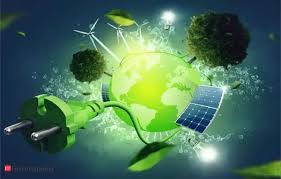
Benefits of Advanced Energy Technology:
-
Reduces Carbon Emissions: By replacing fossil fuels with clean alternatives.
-
Improves Efficiency: Technologies like LED lighting and smart thermostats save energy.
-
Boosts Energy Security: Local renewable sources reduce dependence on imported fuels.
-
Creates Jobs: Renewable energy sectors create millions of green jobs worldwide.
Future of Energy Technology:
The future focuses on:
-
Green hydrogen as a clean fuel.
-
Fusion energy – still experimental, but potentially limitless and clean.
-
Advanced battery chemistries for longer-lasting storage.
-
Carbon capture and storage (CCS) to reduce emissions from existing power plants.
♦ What is Energy Technology?
- Energy technology refers to the tools, systems, and methods used to produce, store, convert, distribute, and use energy efficiently and sustainably. It includes both traditional and modern technologies — from fossil fuel-based power plants to advanced renewable energy sources like solar, wind, and hydroelectric power.
Key Components of Energy Technology:
-
Energy Generation:
-
Producing electricity from sources like coal, natural gas, nuclear, solar, wind, and water.
-
-
Energy Storage:
-
Saving energy for later use with technologies like batteries, pumped hydro, and hydrogen storage.
-
-
Energy Transmission and Distribution:
-
Moving energy from power plants to homes and businesses through smart grids and power lines.
-
-
Energy Efficiency:
-
Using energy-saving appliances, LED lighting, and insulation to reduce consumption.
-
-
Energy Management Systems:
-
Digital and AI-powered systems that monitor and optimize energy usage in real-time.
-
Goal of Energy Technology:
-
To provide reliable, affordable, and clean energy.
-
To reduce environmental impact, especially greenhouse gas emissions.
-
To increase energy access globally, especially in developing regions.
Key Pioneers in Energy Technology:
-
James Watt (1736–1819)
-
Invented the improved steam engine in the 18th century.
-
Revolutionized how energy was produced and used during the Industrial Revolution.
-
-
Michael Faraday (1791–1867)
-
Discovered electromagnetic induction, leading to the invention of the electric generator.
-
His work laid the foundation for modern electricity generation.
-
-
Thomas Edison (1847–1931)
-
Developed the first practical electric light bulb and power distribution system.
-
Built the world’s first electric power plant in New York in 1882.
-
-
Nikola Tesla (1856–1943)
-
Invented alternating current (AC) power systems, which became the standard for electricity transmission.
-
-
Albert Einstein (1879–1955)
-
His theory of relativity helped explain nuclear energy and led to the development of nuclear power.
-
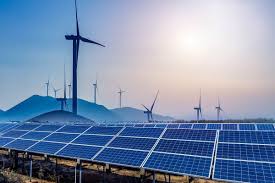
Renewable Energy technology Innovators:
-
Edmond Becquerel (1839) – Discovered the photovoltaic effect, which is the basis for solar cells.
-
Frank Shuman (1913) – Built the first solar thermal power plant in Egypt.
-
Modern Contributors – Scientists and engineers worldwide are now developing wind turbines, solar panels, smart grids, hydrogen fuel cells, and energy storage systems.
Main Types of Energy
1. Kinetic Energy
-
Energy of motion.
-
Examples: Moving car, flowing water, wind.
2. Potential Energy
-
Stored energy due to position or shape.
-
Examples: A stretched rubber band, water behind a dam.
3. Thermal (Heat) Energy
-
Energy from the movement of particles in a substance.
-
Examples: Fire, hot coffee, geothermal energy.
4. Chemical Energy
-
Stored in the bonds of atoms and molecules.
-
Examples: Food, batteries, fossil fuels.
5. Electrical Energy
-
Energy of moving electrons.
-
Examples: Electricity from a power plant, lightning.
6. Nuclear Energy
-
Energy released from the nucleus of an atom (fission or fusion).
-
Examples: Nuclear power plants, the sun’s energy.
7. Radiant (Light) Energy
-
Energy from electromagnetic waves, especially visible light.
-
Examples: Sunlight, X-rays, radio waves.
8. Sound Energy
-
Energy from vibrations that travel through air or another medium.
-
Examples: Music, speaking, engine noise.
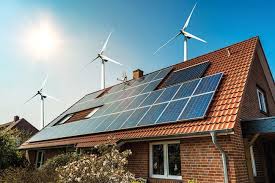
Renewable vs. Non-renewable Energy Sources
Renewable Energy
-
Comes from natural sources that are constantly replenished.
-
Solar
-
Wind
-
Hydro-power
-
Biomass
-
Geothermal
-
Non-Renewable Energy
-
Comes from sources that can run out or take millions of years to form.
- Coal
- Oil
- Natural Gas
- Nuclear (Uranium)
What is the Main Source of Energy technology?
The main source of energy on Earth is the Sun. It powers almost all natural and human-made processes, either directly or indirectly.
Why is the Sun the Primary Source?
-
Solar Energy:
- Direct sunlight can be converted into electricity using solar panels.
- It also heats the Earth and drives weather patterns and photosynthesis.
-
Wind Energy:
-
Wind is caused by the uneven heating of the Earth’s surface by the Sun.
-
-
Hydropower:
-
The Sun powers the water cycle, which fills rivers and dams used for hydropower.
-
-
Biomass:
-
Plants grow using sunlight, and we use these plants (or animal waste) as fuel.
-
-
Fossil Fuels (Coal, Oil, Gas):
-
These are made from ancient plants and organisms that lived millions of years ago, all of which got their energy from the Sun.
-
Other Energy Sources
-
Geothermal Energy:
-
Comes from the heat inside the Earth — not solar-based.
-
-
Nuclear Energy:
-
Comes from uranium atoms, and its energy is from atomic forces, not the Sun.
-
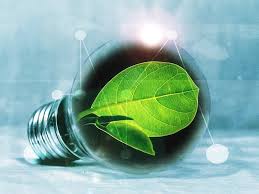
What Type of Energy technology is a Battery?
A battery primarily stores and provides chemical energy. When the battery is in use, this chemical energy is converted into electrical energy to power devices. Energy Transformation in a Battery:
-
Stored Energy:
-
Inside a battery, energy is stored as chemical energy in the form of chemical compounds.
-
-
During Use:
-
A chemical reaction occurs between the battery’s electrodes and electrolyte.
-
This reaction releases electrons, creating a flow of electric current.
-
The chemical energy is thus converted into electrical energy.
-
Examples of Devices Using Battery Energy technology:
-
Mobile phones
-
Laptops
-
Remote controls
-
Electric vehicles
-
Flashlights
Our Principal Source of Energy technology: The Sun
The Sun is the principal (main) source of energy for life on Earth. It provides the energy that powers most natural processes and human technologies.
How the Sun Powers Our World:
Directly:
-
Solar Energy: Solar panels capture sunlight and convert it into electricity.
Indirectly:
-
Wind Energy: Wind is caused by the Sun heating the Earth unevenly.
-
Hydro-power: The Sun drives the water cycle (evaporation → rain → rivers).
-
Biomass: Plants grow using sunlight (photosynthesis) and store energy.
-
Fossil Fuels: Coal, oil, and gas come from ancient plants and organisms that lived using sunlight. Other Sources (Not from the Sun):
-
Geothermal Energy: Comes from the Earth’s internal heat.
-
Nuclear Energy: Comes from splitting atoms (fission), not sunlight.
